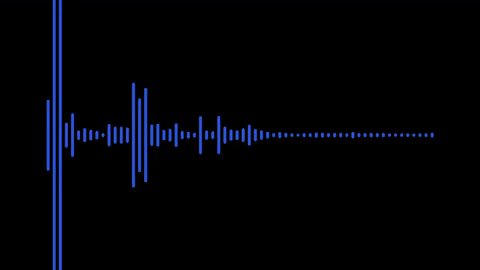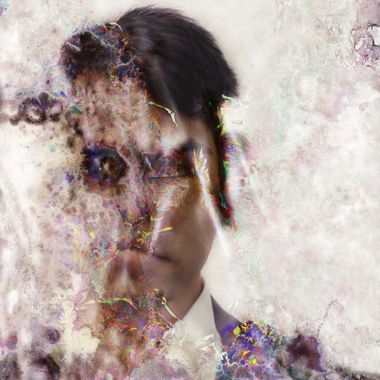Better it is to live one day seeing the rise and fall of things than to live a hundred years without ever seeing the rise and fall of things – The Buddha.
When the Buddha said that it’s better to witness the rise and fall of sensations once than live an entire life, we should probably give it some serious attention. No, really. We should be reading and re-reading material on it until we can explain it to a 3-year-old and are working ardently in our practice to have it be realized.
Yet, many Vipassana meditators practice for years doing anything but this.
Yikes!
Let’s avoid this trap and join the awakened, shall we?
This article will investigate impermanence through a pragmatic lens to provide understanding of what you’re actually trying to do with practice.
I’ve included only the most crucial aspects to understand here. To do this, I’ll be drawing from the wisdom of meditation masters Daniel M Ingram, Mahasi Sayadaw and Joseph Goldstein.
How to apply knowledge from this article:
I highly recommend reading and re-reading this article coupled with my future articles on suffering and no-self until you ‘get it’. These principles are so core to Vipassana practice that to not understand them is criminal for progress.
If not this article, pick any other that clearly and pragmatically outlines how to realize impermanence such as the work of Daniel M Ingram.
I have included a 1-page cheat-sheet printout for frequent revision at the end of this article. That being said, knowing the theory at depth is indispensable. Revisiting this article occasionally will be highly conducive to practice.
Lastly, if you don’t apply this knowledge to your experience no benefit will be gained. As any vipassana meditator must know;
Direct experience is what makes the difference!
Without further adieu, read on.
Awakening to Impermanence In a Nutshell:
Our entire reality is fabricated by an intricate dance of sensations. We need to understand this clearly in order to awaken.
One reliable way this can be achieved is through high-resolution perception of rapidly changing sensations at a rate of 1-10 times per second. Whether a sensation is pleasant, unpleasant or neutral doesn’t matter one little bit in Vipassana practice.
When sensations are perceived this rapidly, the mind eventually flips over to cognizing impermanence directly by default all of the time. While initially requiring effort, once the ‘switch’ is flicked we can relax into this new vastly superior reality.
We see through our own experience that nothing lasts for even a microsecond.
We shatter the illusion of continuity and experience a hyper-present reality.
We cease to cling. When we cease to cling, we cease to suffer.
Physical and Mental Sensations:
An illusion of experiential continuity is created by the rapid interplay of physical and mental sensations. These arise and pass away one after the other in a quick but perceptible fashion.

For example, perhaps there may be a strong feeling of anxiety in the abdomen. First, the mind cognizes this. This may result in a rapid flash of an image related to this emotion. Then attention darts back to the physical sensation of anxiety. Then, a brief burst of mental chatter occurs related to the emotion. And so on. In this way the illusion of continuity is formed.
If this seems difficult to perceive, it is. That being said, science has demonstrated the human mind to be able to cognize 50 bits of information per second. In fact, you're using the brains high speed processing power to read this article right now. It’s possible, people!

Why perceive Impermanence so rapidly?
It leads to rapid progression toward awakening.
Many Vipassana practitioners do not cognize impermanence occurring with high enough clarity. Often, investigation is sluggish and is not brought to moment to moment experience.
What a shame! When we do this the tendency to become lost in stories becomes more pronounced. Awakening becomes distant.
To combat this, we need to be constantly nurturing and dialing up our investigation of impermanence at all times. At work, while cooking, in the bathroom – everywhere. When we do, we don’t have time to be lost in stories as the mind is too busy investigating what is happening in this very moment.
If you can perceive two sensations per second, try for four. If you can perceive 10, try for 20. Be careful not to over-effort and strain though as this can be unskillful. Walking the line between over or under concentrating requires constant fine tuning like the strings of a guitar. As Joseph Goldstein would say, meditation is an art form.
How fast are things vibrating? How many sensations arise and vanish each second? This is exactly what you are trying to experience - Daniel M Ingram.
Investigating in this way also has another benefit. Instead of blindly reacting, we're now treating sensations with a penetrating level of curiosity. We start to see that emotions flicker, pulse and vibrate in predictable patterns. This objectifies them leading to less suffering.
This is especially liberating when experiencing negative emotion when doing Vipassana practice. Be careful though, as sometimes emotions are trying to tell us something - a topic for another article.
Practically Perceiving Impermanence: The Hand Example:
One of the best visual analogies I can think of here for what is it’s like to perceive impermanence at the level that cuts through to awakening is the marching ants of a signal-less TV screen. This is because this is what the changing nature of sensations with a high degree of concentration feels like.
A good place to feel this directly is on the palm of the hands due to the high variability and concentration of sense receptors. Go on, turn your attention toward perceiving the flickering of sensations there right now at a rate of 1-10 sensations per second.
If you aren’t experiencing this with the clarity I’m describing, don’t worry. That is the reality of your experience in this moment and this is the gold standard of what we should always be working with.
To dial up this perception, you simply need to refine your concentration abilities in meditation. To my knowledge one of the best ways to go about doing this is via attending a 10-day S.N Goenka vipassana meditation retreat as this instruction is taught painstakingly over a 3-day period at the start of a retreat.
If this still seems impossible, a little experiment you can run is to tap all five fingers on a desk twice in the space of one second.
There! You’ve just perceived 10 sensations per second. Add in sight, sound, taste, smell and the mental intention to tap your fingers and you’ve probably noticed even more than you thought.
We’ve primarily looked at the touch sense door in this example, but as briefly alluded to you can also bet this flickering is what’s going on throughout the entirety of the body for all of the other sense doors.
Let’s investigate this further.
The Six Sense Doors:
All of the senses need to be perceived at the same high-resolution. That is, at 1-10 times per second at all times to start with. These sense doors include Sight, Sound, Taste, Touch, Smell and Thought.
Let’s now take a look at each individually and see how we might investigate impermanence.
Sight:
Try your best to perceive the sight sense door in frame by frame clarity.
- Leaves blowing in the wind
- Birds flying in the sky
- The flickering of colours (violet, blue, green ect) in the visual field behind closed eyes.

Another great way of perceiving impermanence with sight is to stare at an object and watch the process of change unfold right before your eyes. Notice how focus fluctuates, changes colour, warps and distorts.
Taste:
Try to perceive the changing river of taste while eating.
In the morning, I eat yogurt with yogurt with berries. When doing so, I sometimes try to perceive the sourness of the yogurt flickering back and forth with the sweetness of berries. Try to bring this level of investigation with absolutely everything ingested.
Touch:
Touch is quite a broad sense door, but is extremely rich for investigation of impermanence.
- Temperature variations.
- Itching, Pinching, Contracting.
- Sensations of needing to go to the bathroom.
Smell:
- The fluxing smell of roses
- Smell of bread baking.
- Farts (Seriously. I’d imagine healthcare workers may find this sort of investigation very useful for objectifying sensations of patients who’ve soiled themselves.)
Sound:
Try your best to perceive each individual decibel of sound impinging on your conscious experience.
- Cars going by
- Birds Chirping
- Music playing.

Thought:
The thought sense door is fascinating to observe and investigation here can lead to very powerful insight.
- The little fluxes of sensation that thoughts produce (usually, but not always in the head region)
- The sensation of an intention to perform an action, such as raise an arm.
- The subtle, rapid sensations of what it feels like to pretend to be a sense of self by stating phrases such as ‘I am’.
Dealing with Solidity:
Sometimes sensations will feel ‘solid’. By solid, I mean from our experience an aggregate of sensations may feel like it encompasses a large area that doesn’t seem to be changing in any way.
For example, this might be a strong pattern of discomfort in the body such as anxiety in the abdomen or pain in the knee. Concentration isn’t strong enough here to witness sensations flickering in and out of existence at a rate of 1-10 times per second.
This is perfectly okay! Simply observe what is happening, as it is. If that’s what you’re experiencing in this moment – that’s what you’re experiencing. Trying to strain the mind to perceive flickering won’t do you much good except cause headaches and frustration.
Try your best to perceive patterns of sensations that imply ‘solidity’. Notice how the sensations of this fabricated region shift in magnitude. This can reveal their impermanence.

Pay attention to solidity to appreciate its impermanence.
What meditation technique should be used?
Some of the most popular Vipassana techniques for investigating impermanence are the S.N Goenka body scan technique or the Mahasi Sayadaw noting method.
As long as the technique deals with investigation of sensate reality in this moment as it is; it is suitable.
Real-world example:
Now that we understand how rapidly sensations must be perceived, have gone through the sense doors and now know what we’re looking for, let’s put together an example.
For this example, let’s imagine you’re walking down the street on the way to work with a coffee in hand. You are trying to investigate impermanence directly at each of the six sense doors.
First, you take a step and place your foot down. In doing this, you notice pressure shifting forward from heel to toe as your foot plants on the ground. This is the touch sensation.
Next, you find yourself walking past a coffee shop. The smell of sweet, delicious pastries sets off a cascade of memories of your travels through Italy. You notice the flux of smells and mental sensations of memory clearly as objects blipping in and our of consciousness. In this case, you’ve noticed the smell and thought sense doors.
Suddenly, the impulse arises to take a sip of your coffee. You raise your arm. In this motion, the sight sense door leaps forward to predominate attention. You notice the frame-by-frame perception of the coffee cup moving through space toward the mouth. You’ve noticed the sight sense door.
You sip your coffee. You taste the shift in magnitude from the stronger initial hit of bitter taste and witness the gradual decline of taste intensity. Perhaps you also notice some twinges of sweetness from the chocolate dust of your cappuccino interspersed with the bitterness. This is the taste sense door.
Finally, perhaps your attention is swayed by the gentle sound of birds chirping around the cityscape. You intently try to observe each decibel of sound as it occurs. This is the sound sense door.
Notice how our entire reality is created by sensations occurring in this moment arising and passing.
Through the lens of Vipassana, there is no past or future.
Only now.
To understand this intuitively by hard-wiring this realization over and over again at all times is to awaken.
CONCLUSION:
The buddha’s last words were:
All phenomena are impermanent! Work our your salvation with diligence!
This article has presented a pragmatic blueprint for you to do just this via comprehension of the rapidly changing six sense doors at a high-resolution. When realized, we live in the present. We debunk the illusion of continuity. We cease to cling. When we cease to cling, we cease to suffer. Don’t fall for the common trap of not giving this enough attention.
Couple the understanding from this article with the understanding of suffering and no-self (soon to be released articles) and you’re bound to awaken in this very life. It’s now up to you to apply this to your experience to join the awakened.
Science shows us that spaced repetition is the best way to learn. We must frequently revise material if we have any hope of remembering its content. So, as promised, I’ve included a 1-page printout for your frequent revision. Additionally, I recommend revisiting this article or other amazing works such as those of Daniel M Ingram from time to time.
Check out my Article on No-Self!
May all beings be happy!
Watch my YouTube video on realizing Impermanence:








